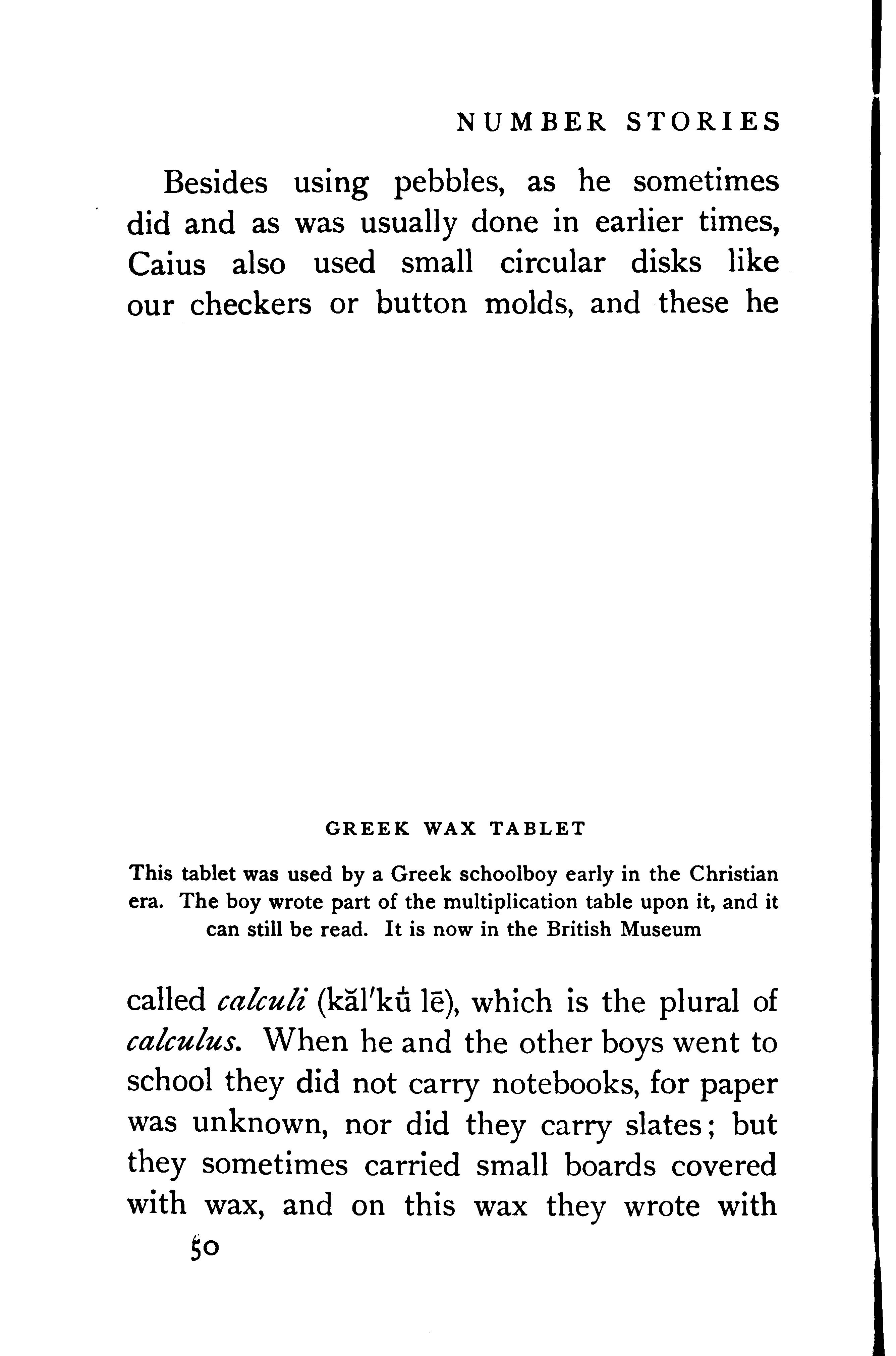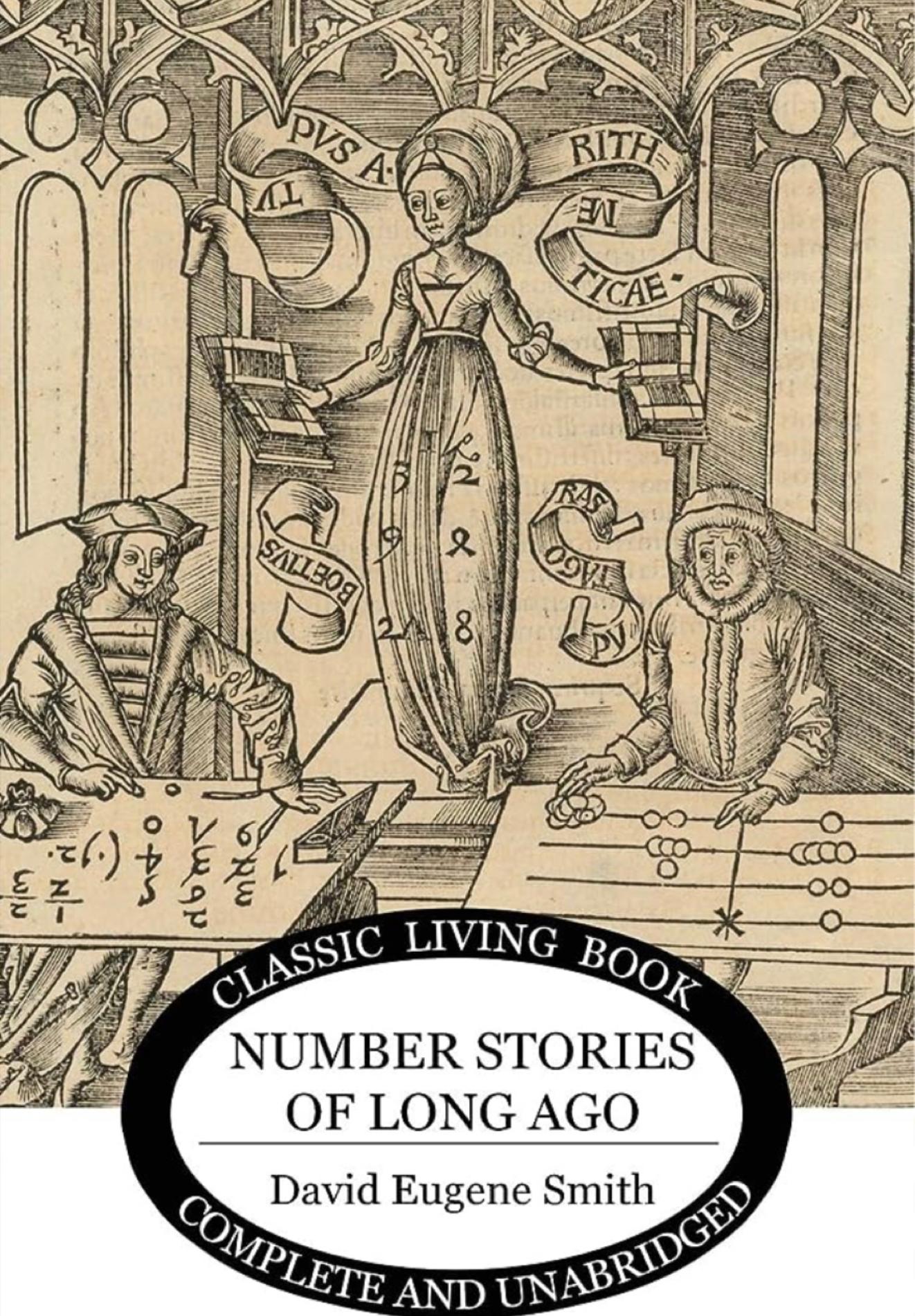
NUMBER STORIES
By placing the pebbles on the lines for units, tens, and so on, he could add quite rapidly. Of course he could not add as rapidly as we
Tens Units Tens Units Tens Units
FirstStep Second Step Third Step

HOW CAIUS ADDED WITH PEBBLES
If Caius wished to add XXII and CXXXVIIII, he first placed 2 pebbles on the units' line, as shown in the First Step. He then placed 9 more, as shown in the Second Step. He then took away 10 of these pebbles, and added one pebble to the tens' line, as shown in the Third Step. The rest of the work is shown on page 49
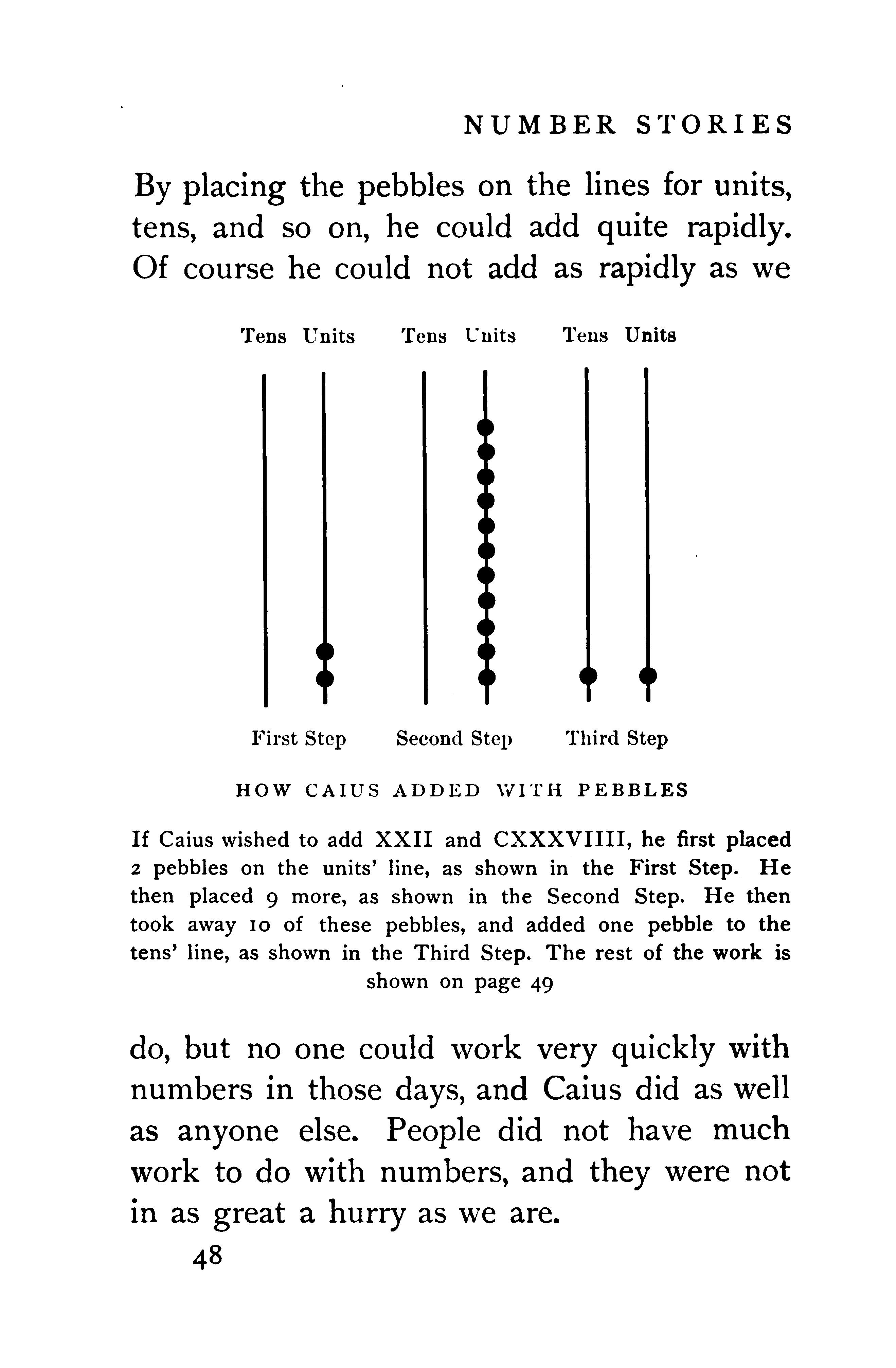
do, but no one could work very quickly with numbers in those days, and Caius did as well as anyone else. People did not have much work to do with numbers, and they were not in as great a hurry as we are.
OF LONG AGO

Of course Caius spoke Latin, and so he did not use the word " pebble," but used the Latin word calculus (k l'k lus), which means Tens Units Tens Units Hundreds Tens Units
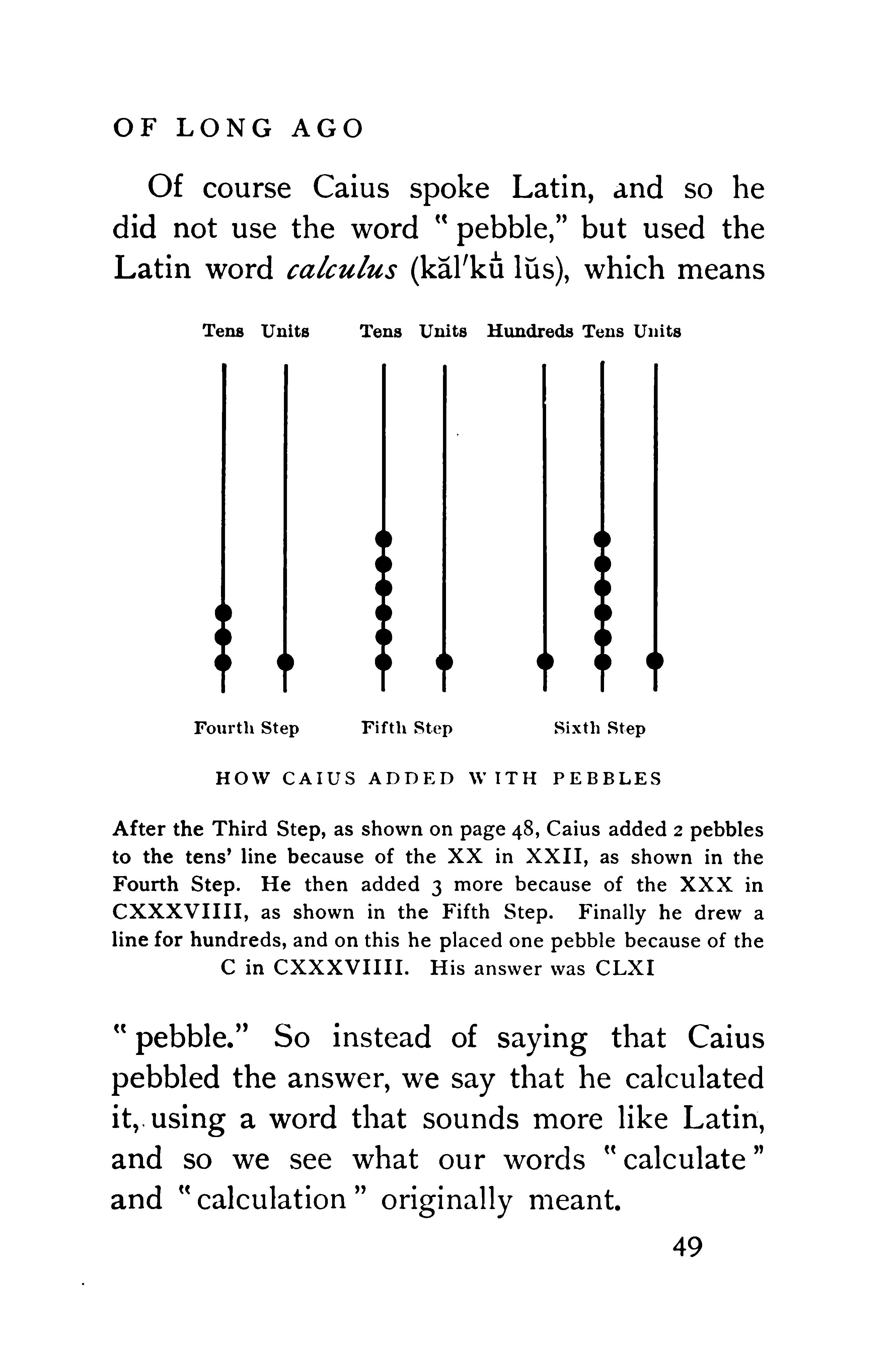
FourthStep Fifth Step Sixth Step
HOW CAIUS ADDED WITH PEBBLES
Afterthe Third Step, as shown on page 48, Caius added 2 pebbles to the tens' line because of the XX in XXII, as shown in the Fourth Step. He then added 3 more because of the XXX in CXXXVIIII, as shown in the Fifth Step. Finally he drew a linefor hundreds, and on this he placed one pebble because ofthe C in CXXXVIIII. His answer was CLXI
" pebble." So instead of saying that Caius pebbled the answer, we say that he calculated. it, using a word that sounds more like Latin, and so we see what our words " calculate " and " calculation " originally meant.
NUMBER STORIES
Besides using pebbles, as he sometimes did and as was usually done in earlier times, Caius also used small circular disks like our checkers or button molds, and these he

GREEK WAX TABLET
This tablet was used by a Greek schoolboy early in the Christian era. The boy wrote part ofthe multiplication table upon it, and it can still be read. It is now inthe British Museum
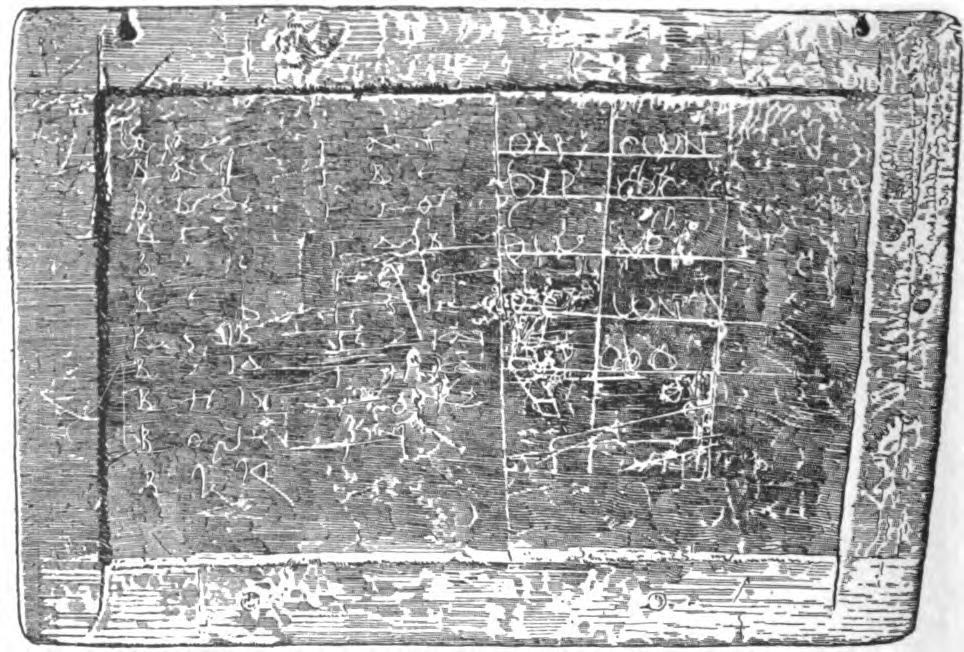
called calculi (kal'kú l ), which is the plural of calculus. When he and the other boys went to school they did not carry notebooks, for paper was unknown, nor did they carry slates; but they sometimes carried small boards covered with wax, and on this wax they wrote with 50
